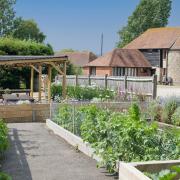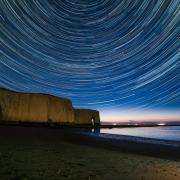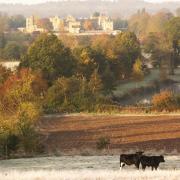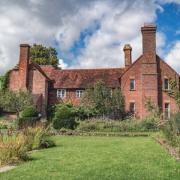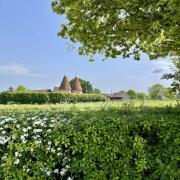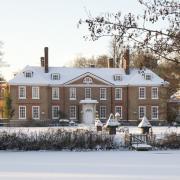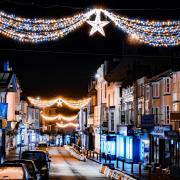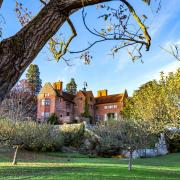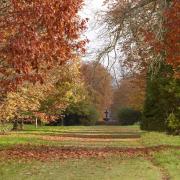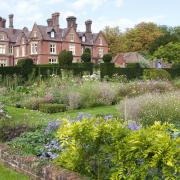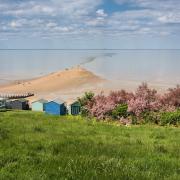It’s been called the key to England and fought off countless invaders, but this town also boasts natural beauty, incredible historic sites and great places to eat and drink. Caroline Read is our guide
1 Imposing castle

You can’t miss the iconic figure of Dover Castle looming over the town. Occupying an important strategic position that had been recognised by Iron Age tribes, the Romans and the Saxons, much of what we see today dates from the 12th century. The site, managed by English Heritage, is huge and visitors get to see everything from medieval underground works to a Roman lighthouse – one of the best remaining examples in the world. At the heart of it all is the Great Tower – Europe’s first concentric castle, built on the orders of Henry II (you can even see a reconstruction of how his bedroom would have looked). But there’s much more to this ancient castle than meets the eye. Built into the cliff beneath it, a series of tunnels were expanded during the Second World War to act as an underground military headquarters and hospital. Famously, it’s the place where Vice Admiral Bertram Ramsay and his team orchestrated the Dunkirk evacuation in May 1940. It’s fascinating to see it today and a series of videos of the drama as it unfolded are projected onto the tunnel walls during the tour.
2 White cliffs
During the war, their image was used to represent our entire country so it’s no surprise that the sight of the famous White Cliffs of Dover is quite an awe-inspiring one. They’re so important to this area that it’s become known as White Cliff Country. The chalk coastline and the delicate habitat the clifftops provide are cared for by the National Trust, which has a visitor centre and a walking trail across the spectacular natural feature. One of the best places to enjoy views of the Channel and the busy harbour packed with enormous ferries and cruise ships, on a clear day you can even spot France in the distance.
3 Secret fort

So well hidden you wouldn’t know it was there unless you knew where to look, the Western Heights are a series of ‘strong points’ linked by strategic ditches across the town’s western hilltop. Begun during the American War of Independence, they were extended during the Napoleonic Wars. If you’re lucky enough to get booked onto one of the Western Heights Preservation Society’s two annual open weekends, you’ll have a tour of something most visitors to Dover have never seen. Its impressive Drop Redoubt is a huge fortress invisible above ground, while its unique Grand Shaft is a 19th century addition to the site – a triple staircase built through 140ft of chalk cliff and designed so that a vast number of troops could quickly get from the Western Heights into the harbour.
4 World’s oldest boat

Dover Museum, right in the town centre, houses one of the most important and fascinating discoveries of recent times. The Bronze Age wooden boat at the heart of its collection was discovered in 1992 and is the world’s oldest known seagoing vessel. Preserved in the mud, it would have carried cargo, passengers and livestock – possibly across the Channel – around 3,500 years ago. The museum also houses important local finds from the Roman, Anglo-Saxon and Norman eras, scale models showing the development of the town over the centuries and all sorts if items from the town’s pivotal role in both world wars.
5 Great places to eat
Eating out is a pleasure in Dover, with old favourites like Cullin’s Yard and The White Horse, along with Jerk N’ Tingz, The Elephant & Hind, Calcutta Port, Il Rustico, The Dover Patrol, Dino’s and new tapas bar Rico Sabor. Drink at the Breakwater Brewery and Taproom, wine bar and music venue Vinoteq and micropub The Hoptimist. Celebrity chef Marco Pierre White has one of his Mr White’s English Chophouses at Dover Marina Hotel and a Wheeler’s Fish and Chips restaurant in the town.
6 Beautiful bay

Just a ten-minute drive from Dover, St Margaret’s Bay is the place if you’re here for some peace and quiet. A pretty shingle beach surrounded by the towering chalky cliffs, you can walk out at low tide and search for fossils and sea creatures in the rock pools. The closest part of England to France, you’ll notice you even have French mobile phone signal here. Look out for the Art Deco houses right down on the beach where both Noel Coward and Ian Fleming once lived. The main village is quite a way inland, and well worth visiting for cosy pubs and local shops. Have a drink at the 17th century Smugglers Inn, take in the views from The Coastguard or head off for a cup of tea at either the Pines Garden Tea Room or Mrs Knott’s Tea Room at the South Foreland Lighthouse.
7 Brilliant boat tours
Even if swimming the channel isn’t exactly your thing, you can do all sorts of water sports and sea fishing trips in Dover. A firm favourite for a day out on the waves has to be Dover Sea Safaris, which runs tours on its RIB speedboat or high-speed catamaran from the harbour. With something for all the family, tours vary in length and offer unparalleled views of the white cliffs. Choose a wildlife tour and visit the local seal colony, or head out to explore the Goodwin Sands. Entertaining and unique, this is one of our favourite experiences in the county – plus the catamaran is wheelchair accessible.
8 Roman ruins
Built around 200 AD, the Roman Painted House in New Street is one of the finest properties from this era in Britain. Believed to have been accommodation for travellers crossing the Channel, it was discovered during construction work in the 1970s and had been built over by the Romans themselves. Hidden away beneath the remains of a later Roman fort, archaeologists uncovered more than 400sq ft of painted plaster with designs all centred around Bacchus, the Roman god of wine. A popular spot for school visits, it’s open to the public between spring and autumn each year.
If you’re planning a day out in Dover, visit the whitecliffscountry.org.uk website for even more ideas.





